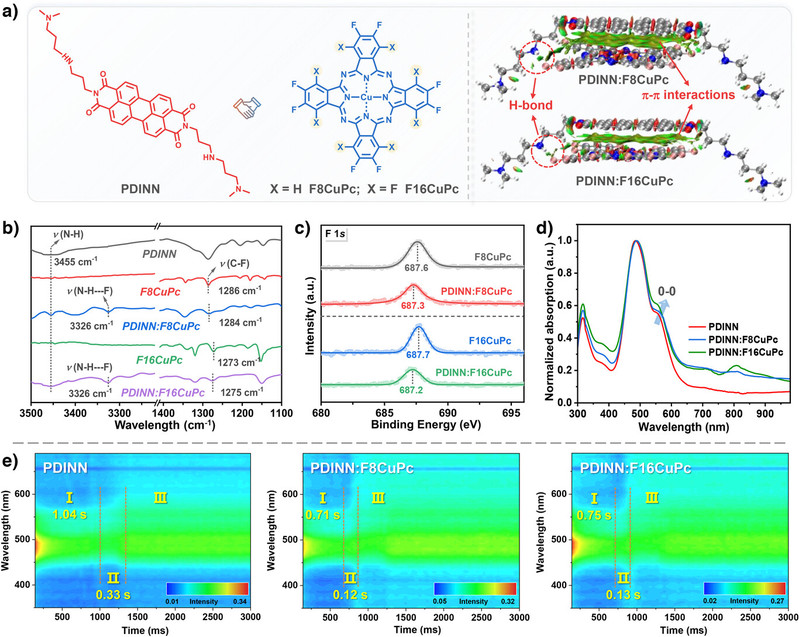Hybrid Cathode Interlayer Engineering Enables Over 20% Efficiency of Organic Solar Cells
Hang Yang1, Wenjing Zhang1, Xiaoxiao Li1, Ya Yuan1, Yue Wu1, Xiaoying Xiong3, Chaohua Cui1,2(崔超华)*, Yongfang Li1,2,4
1Laboratory of Advanced Optoelectronic Materials, Suzhou Key Laboratory of Novel Semiconductor-Optoelectronics Materials and Devices, State Key Laboratory of Bioinspired Interfacial Materials Science, College of Chemistry Chemical Engineering and Materials Science, Soochow University, Suzhou 215123, P.R. China
2Jiangsu Key Laboratory of Advanced Negative Carbon Technologies, Soochow University, Suzhou, Jiangsu 215123, P.R. China
3State Key Laboratory of Coordination Chemistry, College ofEngineering and Applied Sciences, Nanjing University, Nanjing210023, P.R. China
4Beijing National Laboratory for Molecular Sciences, CAS Key Laboratory of Organic Solids, Institute of Chemistry, Chinese Academy of Sciences, Beijing 100190, P.R. China
Angew. Chem. Int. Ed.2025,64,e202507294
Abstract: The capability of cathode interlayer (CIL) in regulating the conductivity, interfacial dipole, and work function of the electrode plays a critical role in determining the photovoltaic performance of organic solar cells (OSCs). The widely used perylene-diimide-based CILs suffered from the inbuilt limitation of finite conductivity and poor thickness tolerance. To address this issue, we develop a universal strategy to finely optimize the functionality of perylene-diimide-type CIL (PDINN) by incorporating polyfluorine-substituted copper phthalocyanine (CuPc) derivative to form a hybrid CIL. It is found that the hydrogen bonding and π–π interaction between PDINN and CuPc can address the solvent processability issue of CuPc used as CIL. The incorporation of CuPc in the PDINN layer leads to better film morphology, increased conductivity, and reduced cathode work function, enabling greater CIL thickness tolerance and significantly improved photovoltaic performance of OSCs. Notably, the PM6:D18:L8-BO-based device using PDINN:F16CuPc as hybrid CIL yields a remarkable power conversion efficiency (PCE) of 20.17%, which is a significant improvement with regard to the PCE of 19.29% for the control device based on PDINN CIL. Particularly, this strategy demonstrates a universality in multiple photoactive layers and various perylene-diimide-based CILs, offering an effective approach to developing highly efficient OSCs.

Article information: https://doi.org/10.1002/anie.202507294